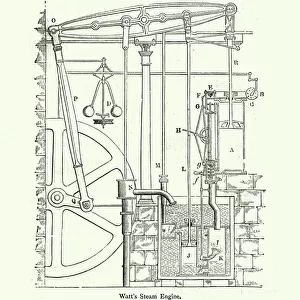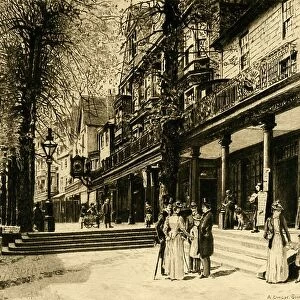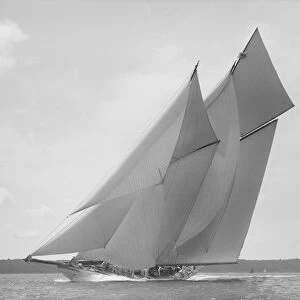Home > Architecture > Industrial
Diagram of James Watts Double acting steam engine
![]()

Wall Art and Photo Gifts from Fine Art Storehouse
Diagram of James Watts Double acting steam engine
Vintage engraving of a Diagram of James Watts Double acting steam engine. James Watt was a Scottish inventor, mechanical engineer, and chemist who improved on Thomas Newcomens 1712 Newcomen steam engine with his Watt steam engine in 1776, which was fundamental to the changes brought by the Industrial Revolution
Unleash your creativity and transform your space into a visual masterpiece!
duncan1890
Media ID 19520851
© of Duncan P Walker
FEATURES IN THESE COLLECTIONS
> Fine Art Storehouse
> Journeys Through Time
> Steam Locomotives
EDITORS COMMENTS
This vintage engraving captures the intricate diagram of James Watt's revolutionary double-acting steam engine, a true testament to his brilliance as an inventor and engineer. With meticulous detail, this print showcases the inner workings of Watt's creation, which played a pivotal role in shaping the Industrial Revolution. James Watt, a Scottish genius who lived during the 18th century, made significant improvements to Thomas Newcomen's earlier steam engine design. In 1776, he unveiled his groundbreaking invention - the Watt steam engine. This remarkable machine harnessed the power of steam more efficiently than ever before and became a driving force behind industrial advancements that transformed society. As we delve into this illustration, we witness how each component seamlessly interacts with one another to produce motion and energy. The symphony of gears and pistons reveals Watts' mastery in harnessing steam power for practical applications across various industries. This print serves as both an educational tool and a tribute to James Watt's invaluable contributions to human progress. It reminds us of how innovation can shape history by propelling societies forward through technological breakthroughs. Whether you are an enthusiast fascinated by engineering marvels or someone captivated by historical milestones, this print is sure to ignite your imagination and transport you back in time when James Watt forever changed our world with his extraordinary double-acting steam engine.
MADE IN AUSTRALIA
Safe Shipping with 30 Day Money Back Guarantee
FREE PERSONALISATION*
We are proud to offer a range of customisation features including Personalised Captions, Color Filters and Picture Zoom Tools
SECURE PAYMENTS
We happily accept a wide range of payment options so you can pay for the things you need in the way that is most convenient for you
* Options may vary by product and licensing agreement. Zoomed Pictures can be adjusted in the Cart.












